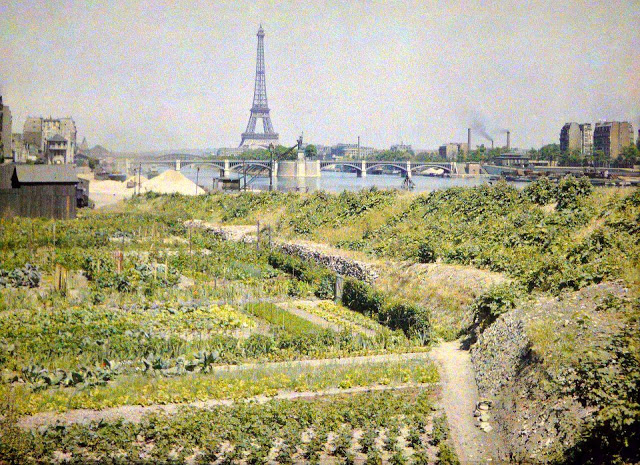
It may well be that the major pivot points of history are only visible to those around the bend. For those of us immersed in the present—for all of its deafening sirens of violent upheaval—the exact years future generations will use to mark our epoch remain unclear. But when we look back, certain years stand out above all others, those that historians use as arrestingly singular book titles: 1066: The Year of Conquest, 1492: The Year the World Began, 1776. The first such year in the 20th century gets a particularly grim subtitle in historian Paul Ham’s 1914: The Year the World Ended.
It sounds like hyperbolic marketing, but that apocalyptic description of the effects of World War I comes from some of the most eloquent voices of the age, whether those of American expatriates like Gertrude Stein or T.S. Eliot, or of European soldier-poets like Wilfred Owen or Siegfried Sassoon.
In France, the horrors of the war prompted its survivors to remember the years before it as La Belle Epoque, a phrase—wrote the BBC’s Hugh Schofield in centenary essay “La Belle Eqoque: Paris 1914,”—that appeared “much later in the century, when people who’d lived their gilded youths in the pre-war years started looking back and reminiscing.”
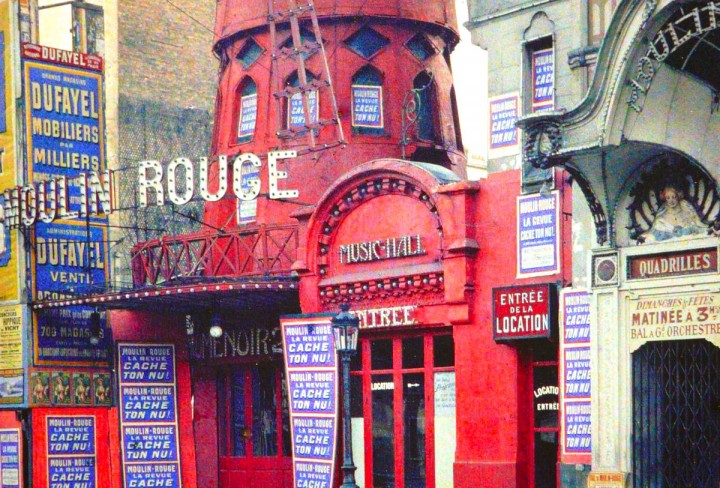
We’re used to seeing the period of 1914 in grainy, dreary black-and-white, and to seeing nostalgic celebrations of La Belle Epoque represented graphically by the lively full-color posters and advertisements one finds in décor stores. But thanks to the full color photos you see here, unearthed a few years ago by Retronaut, we can see photographs of World War I‑era Paris in full and vibrant color—images of the city one-hundred years ago almost just as Parisians saw it at the time. Icons like the Moulin Rouge come to life in bright daylight, above, and lighting up the night, below.
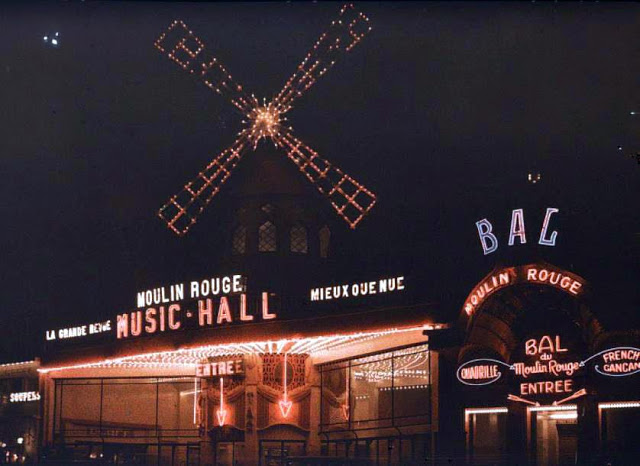
Early cinema Aubert Palace, below, in the Grands Boulevards, shimmers beautifully, as does the art-deco lighting of the Eiffel Tower, further down.
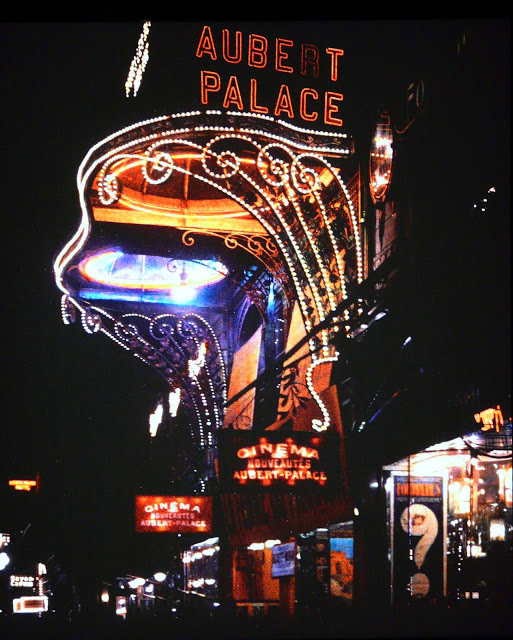

Below, hot air balloons hover in the enormous Grand Palais, and further down, a photograph of Notre Dame on a hazy day almost looks like a watercolor.
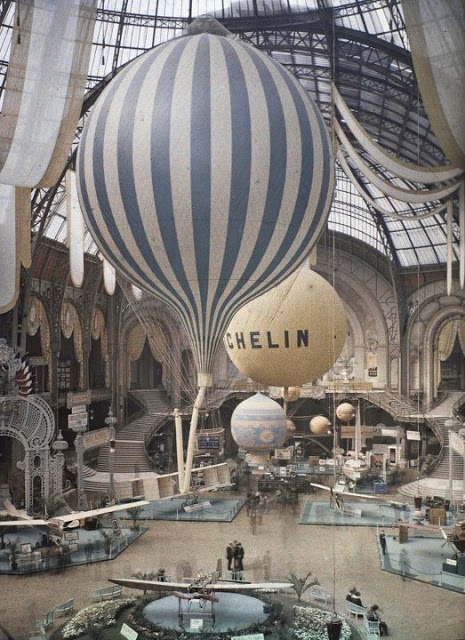
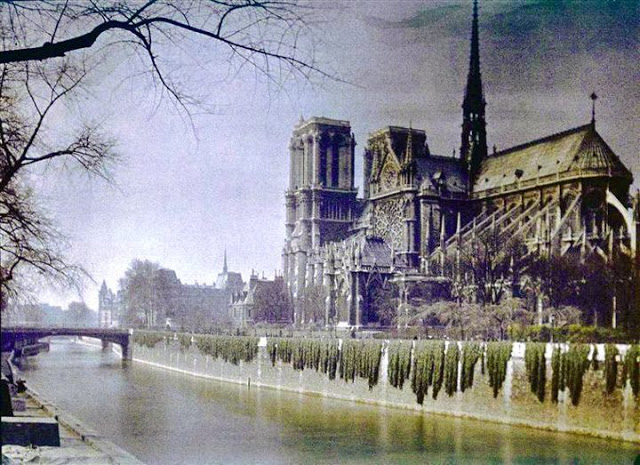
The photographs were made, writes Messy N Chic, “using Autochrome Lumière technology between 1914 and 1918 [a technique developed in 1903 by the Lumière brothers, credited as the first filmmakers]…. [T]here are around 72,000 Autochromes from the time period of places all over the world, including Paris in its true colors.”


Not all of the photographs are of famous architectural monuments or nightlife destinations. Very many show ordinary street scenes, like those above, one depicting a number of bored French soldiers, presumably awaiting deployment.

The Paris of 1914 was a European capital in major transition, in more ways than one. “Modernity was the moving spirit,” writes Schofield; “It was the time of the machine. The city’s last horse-drawn omnibus made its way from Saint-Sulpice to La Villette in January 1913.”

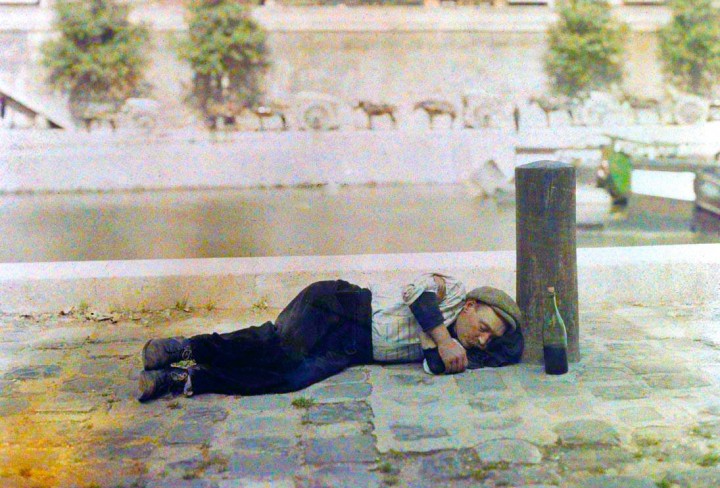
Schofield also points out that, like Gilded Age New York, “the public image of Paris was the creation of romantic capitalists. The reality for many was much more wretched… there were entire families living on the street, and decrepit, overcrowded housing with non-existent sanitation.” Modernity was leaving many behind, class conflict loomed in France as it erupted in Russia, even as the global catastrophe of World War threatened French elites and proletariat alike, who both served and who both died at very high rates.
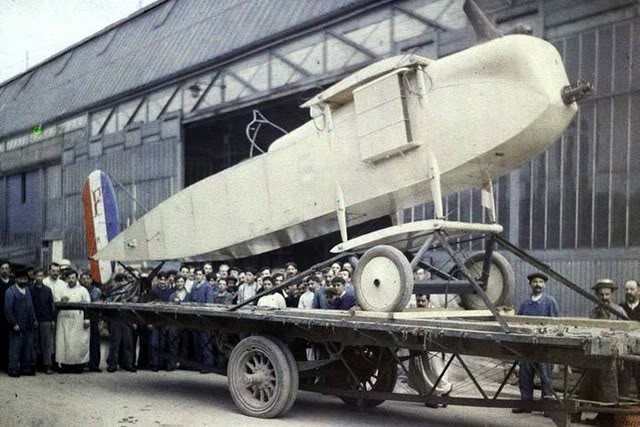
You can see many more of these astonishingly beautiful full-color photographs of 1914 Paris—at the end of La Belle Epoque—at Flavorwire, Vintage Everyday, Faded & Blurred, and Messy N Chic.
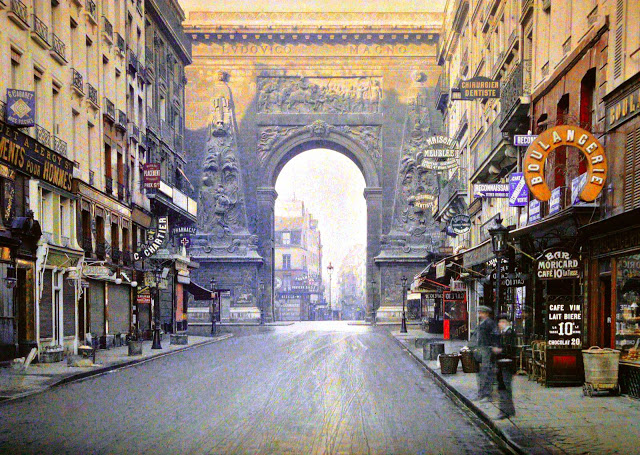
Related Content:
Impressionist Painter Edgar Degas Takes a Stroll in Paris, 1915
Rare Film of Sculptor Auguste Rodin Working at His Studio in Paris (1915)
Paris Through Pentax: Short Film Lets You See a Great City Through a Different Lens
Josh Jones is a writer and musician based in Durham, NC. Follow him at @jdmagness


The Grand Palais photo looks like a Georges Melies film come to life.
Any information on the Eiffel Tower with the art deco lighting? Amazing!
It says CITROEN… the Eiffel Tower used to be used for advertising, and Citroen is a French automobile company. It seems it might be later than 1914, though. Google makes it sound like Citroen used it from 1925–34.
The two Moulin Rouge pics are from different time periods — the fronts do not match (look at the night photo with increased brightness — you will see the fronts do not match).
Some of these look like they could be post WWII, actually. Even 1950s. Definitely not all from WWI era.
Hi!
The last image labelled as Arc of Triumph can’t possibly be L’Arc de Triomphe de l’Etoile of Paris, but a different monument.
This is the picture incorrectly labelled.
http://cdn8.openculture.com/wp-content/uploads/2015/11/19232445/Arc-de-Triumph.jpg
Here’s the Arc of Triumph as it stands today, it has very distinct sculptures on each of its pillars.
https://www.google.com/maps/@48.8740915,2.2943106,3a,75y,122.95h,100.5t/data=!3m6!1e1!3m4!1s2qbiw27Z68iFrJXEOZIIBg!2e0!7i13312!8i6656
These are the said sculptures
https://fr.wikipedia.org/wiki/Arc_de_triomphe_de_l%27%C3%89toile#D.C3.A9tails_des_sculptures
The monument in the picture is the Porte Saint-Denis
https://www.google.com/maps/place/porte+de+saint+denis+a+paris/@48.8699102,2.352555,3a,75y,174.84h,121.93t/data=!3m6!1e1!3m4!1szTrn2JtygcENkhObwntLUw!2e0!7i13312!8i6656!4 m²!3m1!1s0x0:0xa716ebce88ebe53b!6m1!1e1
https://fr.wikipedia.org/wiki/Porte_Saint-Denis
As correctly pictured in Mashable
http://1.mshcdn.com/wp-content/uploads/2015/11/parisautochromevert-10.jpg
The photo labelled as Arc of Triumph is actually the arch at Porte Saint-Denis. The night-time photos of Aubert Palace and the Moulin Rouge show neon lighting, which didn’t come into use until the late 1920’s. Lovely images though!
WOW, never knew anyone had done colour photo in those days. That had to cost a fortune, couldn’t have been cheap back then. When did color photographs begin to exist? This is so amazing. And the view of the tower with grounds in the fore-front is great! Thank you for showing us these.
I’m pretty sure the color was added later. It’s not part of the original photographs. This is done with many old black-and-white photographs.
VR: these photos are the real thing. They’re Autochromes, an early color process developed by the perfectly-named Lumière brothers. The images were captured on dyed grains of potato starch, which accounts for their somewhat soft appearance. There’s oceans of information available about the Lumières and their achievements.
I did a bit more diving and found that the only colorization was some digital touch-up to restore parts of the photos that had faded over time.
A number of other sites identify the photo of soldiers at the Métro station as having been taken shortly after the Great War. They’re clearly on assignment but unlikely to have been deployed for battle.